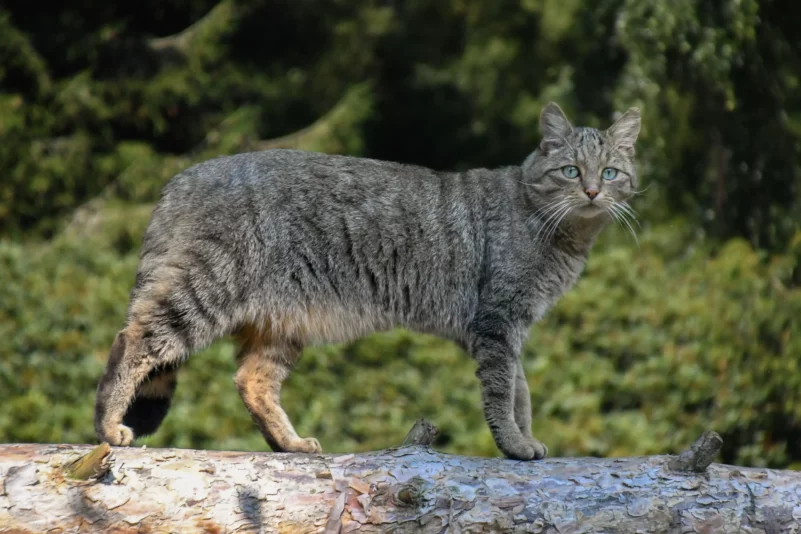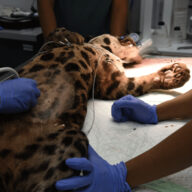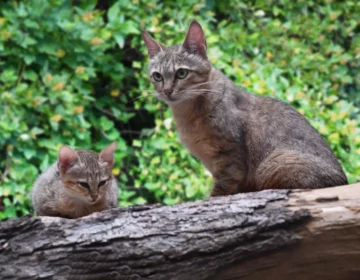
European wildcat
Felis silvestris
European wildcat
APPEARANCE
The European wildcat is the size of a large domestic cat. It has a wide head and widely spaced ears. Wildcat’s coat is thick and long in winter, grey-brown with a distinct pattern consisting of black stripes on the head, neck, limbs and a clear line along the back. Wildcats have a downy tail with several black rings and a black tip. Some individuals have a white patch on the throat. In winter fur, the wildcat’s legs appear short and its build is compact; it actually has longer legs than most domestic cats.
DISTRIBUTION AND HABITAT
The European wildcat inhabits parts of Europe and Russia as far south as Central Asia.
It is mainly associated with forest habitats and is most commonly found in deciduous or mixed forests. It also inhabits grassland and steppe habitats and can be found in Mediterranean macchia bushland, floodplain forests, marsh borders, along sea coasts, or in very wet marshy areas.
BEHAVIOUR
European wildcats are considered solitary predators, active mainly nocturnally and territorially. In areas with low human activity, wildcats are often active during the day, with activity increasing at dawn and dusk.
FOOD
European wildcats’ main food is rodents such as rats, mice, and voles. They have no particular species preference. In areas where rabbits occur, they may be the main prey of European wildcats.
MAIN THREATS
One of the main threats to European wildcats is hybridization with domestic cats, which can lead to loss of genetic variation or loss of specific adaptations.





